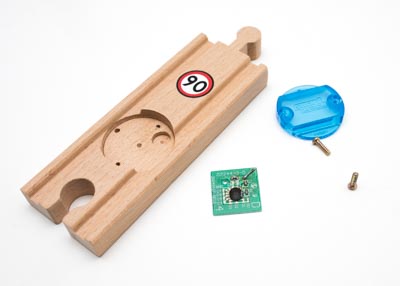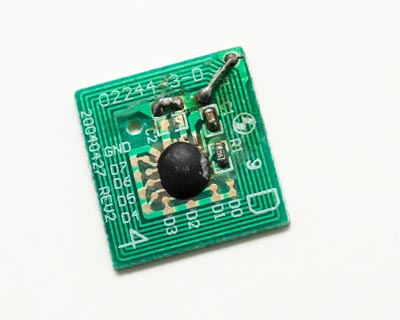With Smart Tech products out in Europe and soon to be released in the U.S., I thought it might be fun to take a close look at BRIO’s previous generation of this technology: Smart Track.

The RFID tag is not cemented down, but grooves in the translucent cover hold it in place. Two screws with tamper-proof triangle heads prevent children from (easily) taking it apart.
The RFID tag itself is a passive style, which means it gathers its power from the electromagnetic waves emitted by the scanner.

The RFID chip on the tag is covered with a ball of epoxy, which is kind of a bummer since that means we can’t really look at it without destroying it. However, there are eight electrical contacts exposed, which implies it’s got an 8-bit programming interface. Learning how to interact with that is an exercise for the reader.
The RFID tag manufacturer helpfully prints the date on the tag. My Smart Track tag was created on April 27th, 2004.
Smart Tech, in contrast to Smart Track, places the tags inside the “tunnels” that span the track. Depending on how those are made, it may be a bit harder to get at the RFID tag inside but I am sure someone, somewhere, will try. If it’s you that does it, drop me a line!